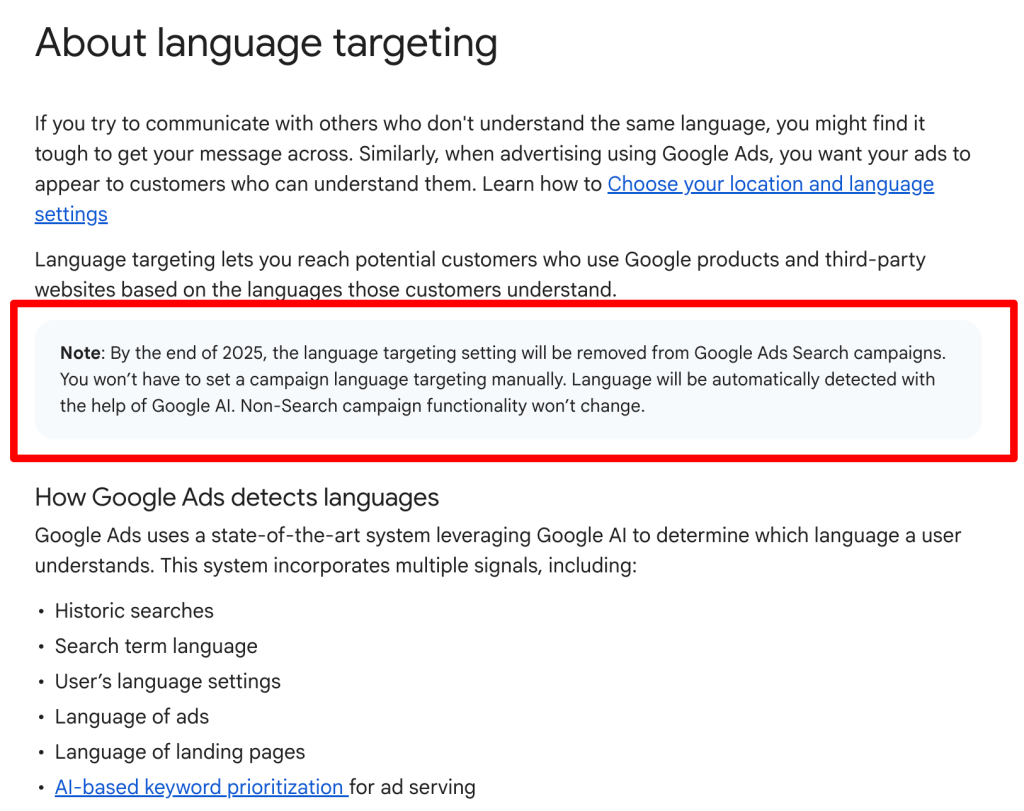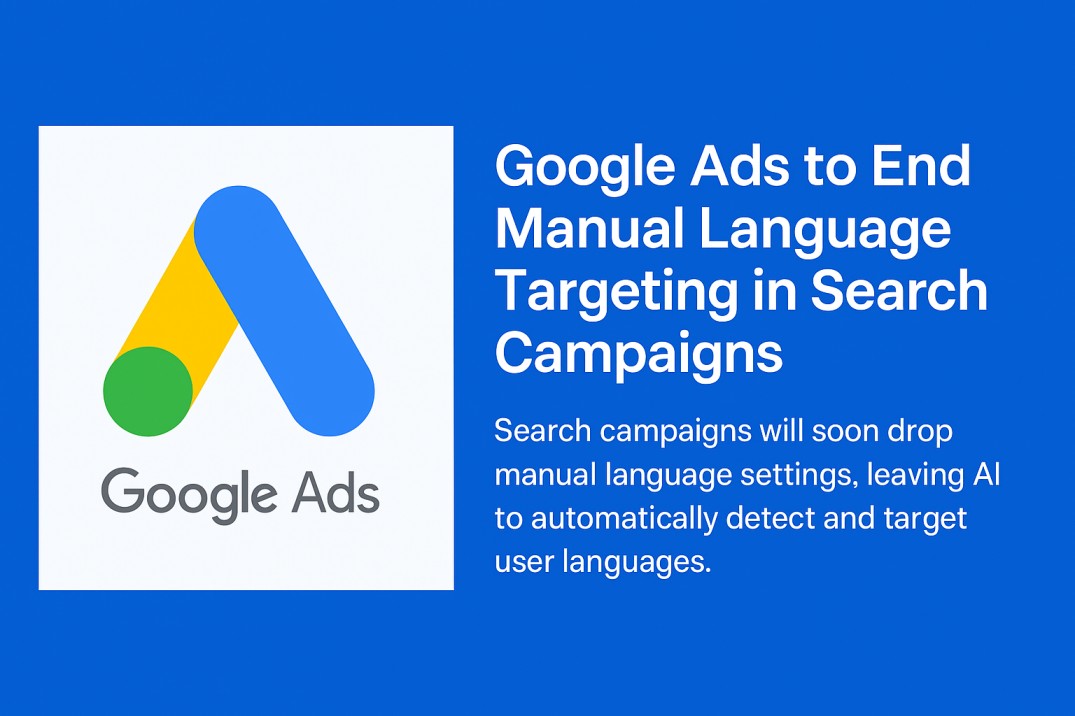Google Ads is removing manual language targeting for Search campaigns by the end of 2025. From then on, language targeting will be 100% AI-driven, with Google’s systems determining the user’s language based on signals like query terms, device settings, browsing behavior, and more.
Why This Matters to Advertisers
- Simpler Setup, Smarter Targeting
Campaign creation will become more streamlined—no more manually selecting languages. Google’s AI aims to boost ad relevance by detecting language nuances in real-time.
- Loss of Granular Control
This move reduces advertiser oversight. In multilingual markets or regions with diverse language preferences, precision could suffer—ads might be shown in unintended languages or miss specific demographic segments.
- Impacts on Reach & Performance
Though AI detection may enhance coverage, brands targeting niche language groups (e.g., French-speakers in Canada) may face uncertainty. Ongoing performance monitoring and adaptive strategies will be critical.
- Greater Risk of Ad Misalignment
Advertisers emphasize that when AI handles critical settings without oversight, there’s a possibility of mismatched ad copy, delivering reduced effectiveness and wasted spend

Broader Context & Strategic Implications
This update reflects Google’s continued shift toward full automation across its ad platforms. Similar changes—like AI-led campaign structuring and smart bidding enhancements—underscore a growing trend toward algorithmic control.
Recommendations for Advertisers
- Audit and Monitor Closely: Compare performance metrics before and after the removal of manual language targeting.
- Test Campaign Versions: Run parallel campaigns with ads in different languages and monitor which conversions perform best under AI targeting.
- Adjust Creatives for Flexibility: Ensure ad copy aligns with multiple user languages (e.g., generic greetings), or use responsive search ads that accommodate broader user language profiles.
- Localization Where It Counts: Prioritize landing page language adaptation and set location targeting carefully to compensate for less language control.
What Remains Unchanged
This shift applies only to Search campaigns. Other campaign types—such as Display, YouTube, and Shopping—will retain their manual language targeting settings.
Source: https://searchengineland.com/google-ads-language-targeting-search-campaigns-460875






